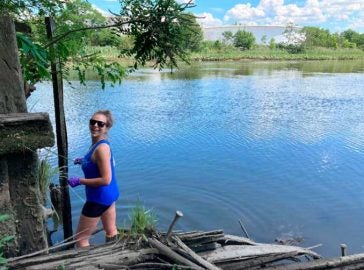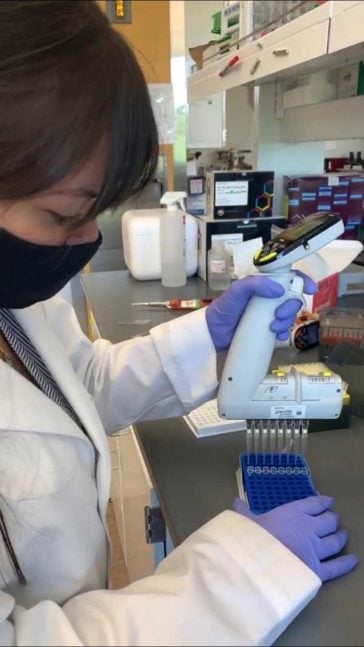
As a PhD candidate at the University of Rhode Island’s Graduate School of Oceanography, Anna Robuck’s research focuses on the distribution of PFAS in marine food webs and seawater. Specifically, her research compares PFAS levels in seabirds from habitats of variable PFAS exposure levels and the tissue-specific distribution of novel and legacy PFAS in seabirds. At the EPA Office of Research and Development in North Carolina, Robuck’s KC Donnelly research project will measure PFAS in environmental samples from the Delaware River Estuary. This estuary is home to over two million people and industrial producers and users of PFAS, and there is high uncertainty surrounding the magnitude of fluorinated contamination in regional watersheds and biota. Samples will be analyzed using targeted, non-target, and total fluorine methods analysis to create a mass balance of PFAS in water and biota, and characterize the biological uptake of novel PFAS found in the system. “The experience will provide me valuable training and mentorship in nontargeted analysis of environmental samples and allow me to collaborate with groups in a federal agency setting,” said Robuck.

Juliana Agudelo, PhD student in URI’s College of Pharmacy, studies proteomic and transcriptomic changes due to PFAS exposure in rodents. Her work also explores novel analytical methods to understand the possible linkage between PFAS exposure and non-alcoholic fatty liver disease (NAFLD) in humans. Assessment of disease and bodily dysfunction associated with exposure to PFAS serves as a key tool to understand the poorly characterized underlying mechanisms behind PFAS exposure and human health-risk. As part of her KC Donnelly research project, Agudelo will quantify PFAS concentrations in environmentally exposed-human livers evaluated for NAFLD and proteomic signatures using targeted and nontargeted mass spectrometry methods. Confirmation of the linkage of PFAS exposure and NALFD in humans will be tremendously valuable from a regulatory standpoint. “This opportunity will allow me to make my PFAS work more useful for human risk assessment by potentially linking our findings in rodents with more human-relevant data,” Agudelo said.

